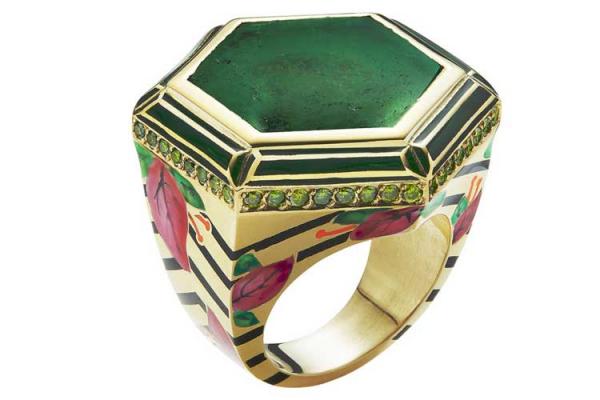The sacred architecture and patterns of the Silk Route are the inspiration for Alice Cicolini's jewellery. It is handmade in India in the studio of one of the last Jaipuri meenakari trained in the enamel traditions of Persia, passed down through family generations over 200 years. A family whose work is owned by the Maharajas of Patiala and Jaipur, and exhibited the world over, their craftsmanship remains of the highest quality.
 |
Alice Cicolini is a designer and creative commissioner, curator of several international touring exhibitions on design and a published author, including a book on contemporary British dandyism, The New English Dandy, for Thames & Hudson.
 |
She is a Research Associate at Central St Martins, where she graduated in 2009 with a Masters in Jewellery Design. Formerly Director Arts & Culture for the British Council in India, she remains closely involved with Indian craft and design.
 |
Known in Europe as champlevé, the meenakari enameling tradition involves engraving pattern in to the metal; in India, craftsmen prefer to work on 23.5 carat gold, the softness of the metal allowing for more detailed and expressive work, brought to life using rare enamels that have been passed down within families as heirlooms in their own right. Enamel is a combination of ground, pigmented glass and metal, heat fired into the recesses created by the engraving and then polished with agate stone to create these extraordinarily vibrant and rich colours. More commonly applied to the reverse of jewels, where the precious stones such as diamonds, sapphires, rubies and emeralds are privileged at the forefront, meenakari is also known as “the secret”, an intimate dialogue with the gem’s wearer.
 |
Alice Cicolini's work aims to go some way towards providing a large-scale platform of expression for this extraordinary tradition - a magical combination of artistry and craftsmanship at the highest level.









